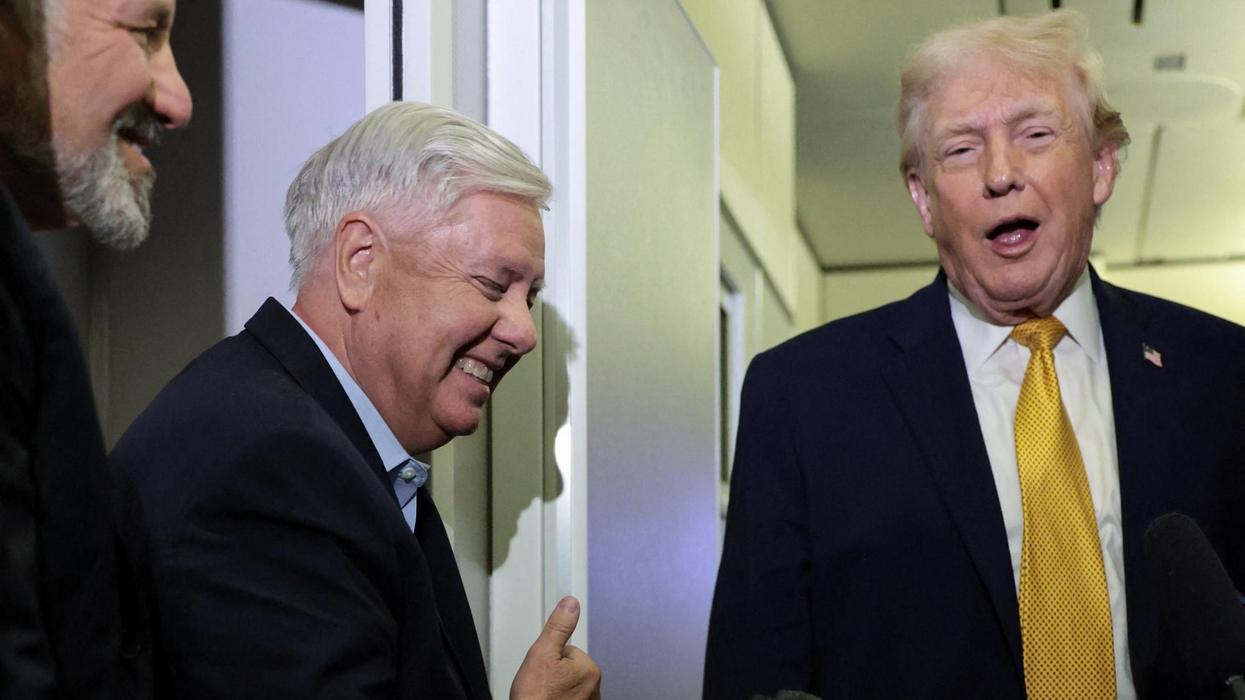America’s commitment to arm Israel and Ukraine while attempting to stockpile large quantities of weapons for a potential war with China is putting strains on America’s weapons manufacturing base, leading many influential policy makers and corporate officials to suggest measures that would super-size this nation’s already enormous military-industrial complex.
This argument is taken to the extreme in a new piece in The National Interest by Arthur Herman of the arms contractor-funded Hudson Institute, entitled “Three Cheers for the Military-Industrial Complex.” The article repeats many of the stock arguments of current advocates of higher Pentagon spending while throwing around misleading statistics and dubious assumptions along the way.
Myth number one routinely put forward by today’s proponents of throwing more money at the Pentagon is that the U.S. military has somehow been neglected over the past few decades, and that therefore we need to inject hundreds of billions of dollars in additional spending into the arms sector to restore our defenses to an acceptable level. This argument has appeared in a recent report by Sen. Roger Wicker (R-Miss.) on the need for a renewed policy of “peace through strength,” as well as in an analysis from a congressional commission charged with assessing the state of America’s defenses.
Both reports — as well as Herman’s article — are based on a false premise.
The Pentagon budget is rapidly spiraling towards $1 trillion per year, one of the highest levels since World War II. And once other military-related items are taken into account — from military aid and veterans’ affairs to the nation’s vast intelligence gathering network — the figure for total national security spending is more like $1.5 trillion. This comes after a decade in which the Pentagon received well over $6 trillion, roughly the same as was spent during the 10 years that included the peaks of the Iraq and Afghan wars.
The above-mentioned numbers are mind-boggling, but the main point is that recent and proposed spending is far more than enough to defend the United States and its allies, if it is spent more wisely and managed more effectively.
The bottom line is that the Pentagon needs more spending discipline, not more spending. For example, it is the only federal agency that is unable to pass an audit, a sad state of affairs that means that the department doesn’t even have an accurate count of how much equipment or spare parts it possesses, or in some cases even where these items are being stored.
Nor, according to former Secretary of Defense Robert Gates, does the Pentagon know how many private contractors it employs, although rough estimates suggest that the number is well over half a million people. These management failures waste untold billions of dollars, year in and year out.
Another source of waste is the Pentagon’s penchant for building dysfunctional weapons systems at exorbitant prices. Cases in point are the F-35 combat aircraft and the Littoral Combat Ship, systems that are so riddled with flaws that they frequently can’t carry out basic functions. Both systems have required billions of dollars in expensive retrofits and have spent large chunks of time out of commission due to needed downtime for repairs and maintenance. The two systems are the poster children for what is wrong with the Pentagon’s system for developing and buying new weapons, from seeking extreme and overly complex performance characteristics to giving away the store to contractors in negotiations over price and performance.
In the meantime, the most expensive element of the Pentagon’s $2 trillion, three decades-long nuclear modernization plan, the Sentinel intercontinental ballistic missile, has undergone cost growth of 81% in the past few years alone.
These weapons development fiascos do absolutely nothing to promote the defense of the United States, but they still manage to enrich the major weapons contractors charged with building them, whether or not they are effective or affordable. Absent reforms in the system that produces these dismal outcomes, simply giving the Pentagon more money is no guarantee of more defensive capability.
Poor management is one thing, but the real pressure to spend more on the military-industrial complex is America’s overly ambitious, outmoded view of the global role of the U.S. military. Current U.S. strategy calls for the ability to beat Russia or China in a conflict, project decisive force against adversaries like Iran and North Korea, quietly continue a global war on terrorism that involves dozens of overseas operations by U.S. forces every year, a massive program to build a new generation of nuclear weapons, and a surge of investment in high-tech, high-speed, pilotless weapons that incorporate artificial intelligence and can operate with little or no human input.
A truly realistic defense strategy would scale back current plans to be prepared to fight wars in any corner of the globe on short notice, pursue a deterrence-only nuclear strategy that would eliminate the need for a costly nuclear modernization plan, and limit military aid to nations engaged in defending themselves or holding off aggressive neighbors.
On the aid front this would mean continuing to arm Ukraine while exploring a diplomatic resolution of the conflict there. But it would involve cutting off assistance to Israel, whose brutal war in Gaza has gone far beyond any reasonable definition of defense, killing 40,000 people in an operation that has involved the commission of numerous war crimes which, according to a growing number of independent human rights and international law experts, may amount to genocide.
It is notable that many proponents of making America a garrison state have little to say about the non-military challenges we face, from climate change to epidemics to political and economic inequality, much less how to address these problems. And if they reference diplomacy at all, it is often as an adjunct to the use or threat of force, not a tool for preventing conflict in the first place.
Advocates like Herman need to step back and question the basic assumptions underpinning their calls for a new military buildup. First, we need to craft a viable strategy. Only then can we have an intelligent discussion about what size budget is required and what sort of manufacturing base is needed to sustain it. But as long as official Washington clings to the illusion that military buildups and arms racing are the magic key to peace, stability, and global dominance, we will waste large sums of scarce resources while increasing the risks of unnecessary conflict.
- How VC is busting the Military Industrial Complex — for its own benefit ›
- Time to retire the phrase 'Military Industrial Complex' ›
- What Paul Krugman gets wrong about the military industrial complex ›
















